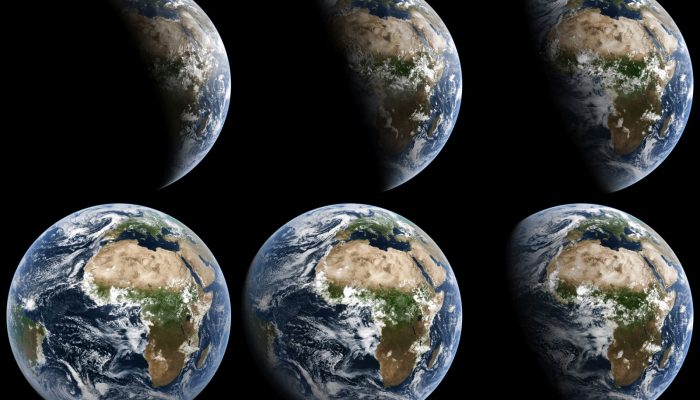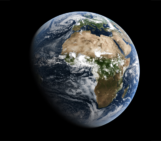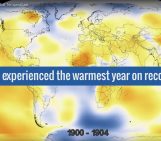
These incredible images of Earth were acquired from the European MSG-2 satellite on July 21, 2009. The MSG, which stands for Meteosat Second Generation, satellites are operated as a series of satellites which continually orbit our planet, capturing detailed images of Europe, Africa and parts of the Atlantic and Indian Ocean every 15 minutes. The data acquired is largely used by meteorologists.
The satellites operate in a geostationary orbit. This means they are located some 36000km above the equator and follow the Earth’s rotation. This orbit allows an extraordinary view on the waxing Earth at 5:00, 6:00, 7:00, 8:00, 10:00, and 12:00 UTC.
But what causes this periodicity ? Exploring the phases of our Moon over the period of approximately a month helps us visualise this phenomenon. It takes the Moon 27 days to complete a full revolution around Earth. During this time, the relative position between the Moon, Earth and the Sun changes, so that, seen from the Earth’s perspective, a new, waxing, full Moon, and waning Moon. Similarly, from the perspective of a geostationary satellite, the Earth apparently orbits the satellite once per day and likewise it observes a “new Earth”, “waxing Earth”, “full Earth”, and “waning Earth” once per day.
Interestingly, the MSG satellites have only one channel (covering the full earth disk) in the visible spectral region, in other words, the portion of the electromagnetic spectrum that is visible to the human eye. The human eye has receptors for three different colours, which means information is missing to generate true colour composite images from MSG. For this reason, Maximillian Reuter (a researcher at Institute of Environmental Physics, University of Bremen, in Germany) and Susanne Pfeifer (Climate Service Center Germany) developed an algorithm that primarily uses the SEVIRI (the main instrument aboard MSG) channels at 0.6μm, 0.8μm and 1.6μm, to transform RGB (red/green/blue) false colour composite images of the used channels into (quasi) true color images. The result is today’s featured image. The lack of information in the blue and green parts of the visible spectrum is compensated by using data from NASA’s Blue Marble next generation project.
By Maximillian Reuter, researcher at Institute of Environmental Physics, University of Bremen and Laura Roberts, EGU Communications Officer.
References :
More information in the publication M. Reuter, S. Pfeifer: Moments from space captured by MSG SEVIRI. International Journal of Remote Sensing, 32, 14, 4131-4140, doi: 10.1080/01431161.2011.566288,2011.
Imaggeo is the EGU’s online open access geosciences image repository. All geoscientists (and others) can submit their photographs and videos to this repository and, since it is open access, these images can be used for free by scientists for their presentations or publications, by educators and the general public, and some images can even be used freely for commercial purposes. Photographers also retain full rights of use, as Imaggeo images are licensed and distributed by the EGU under a Creative Commons licence. Submit your photos at http://imaggeo.egu.eu/upload/.




